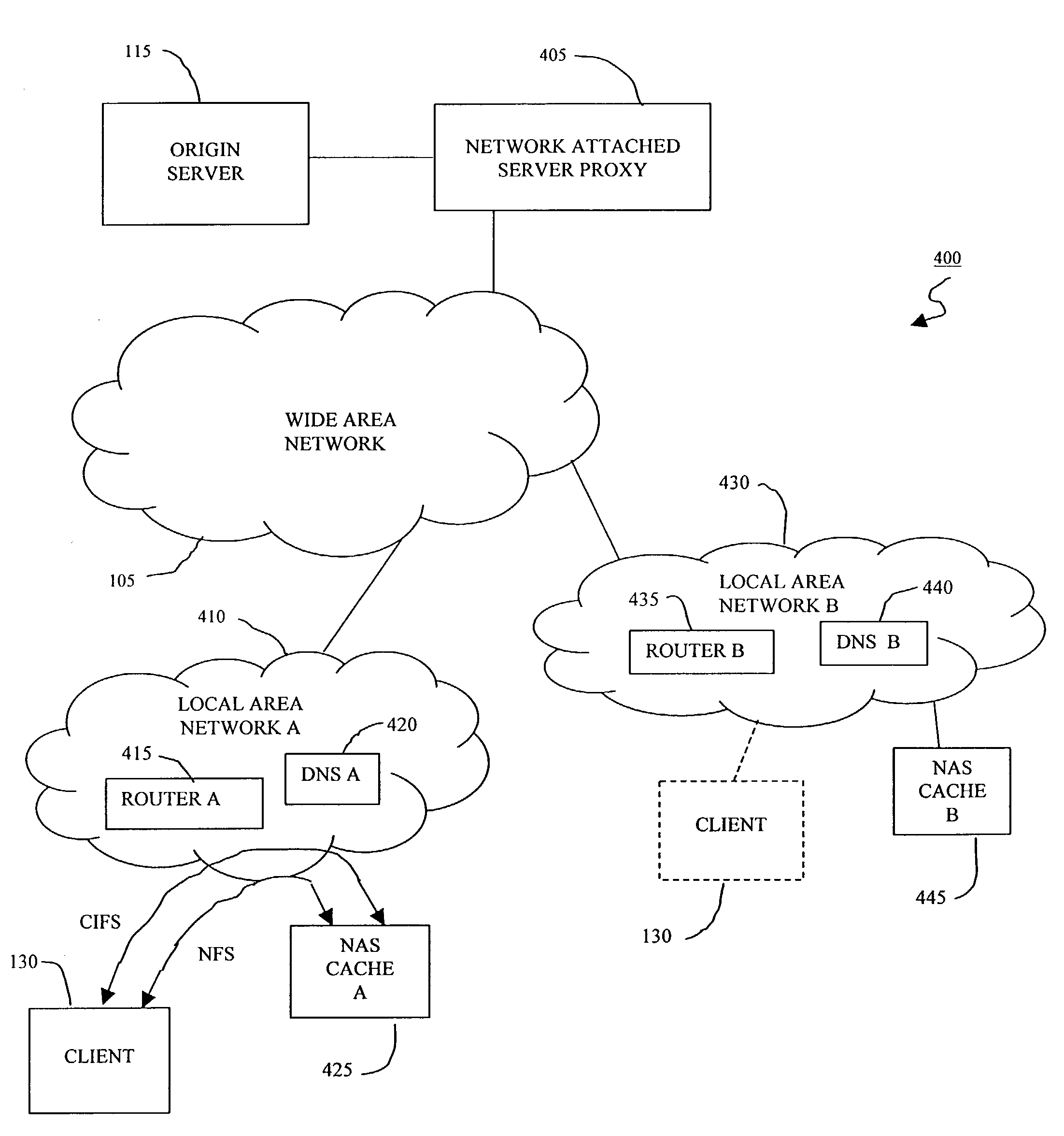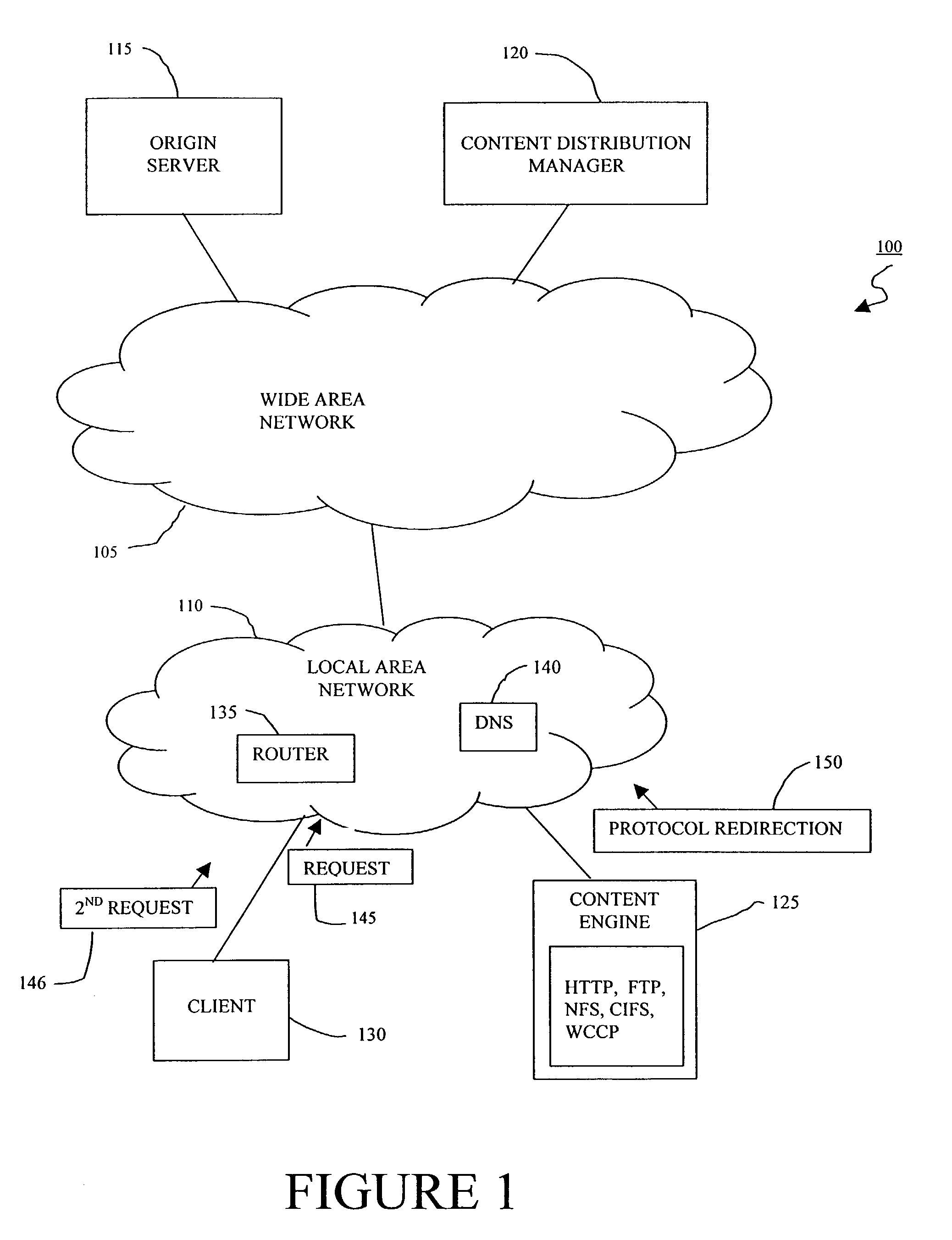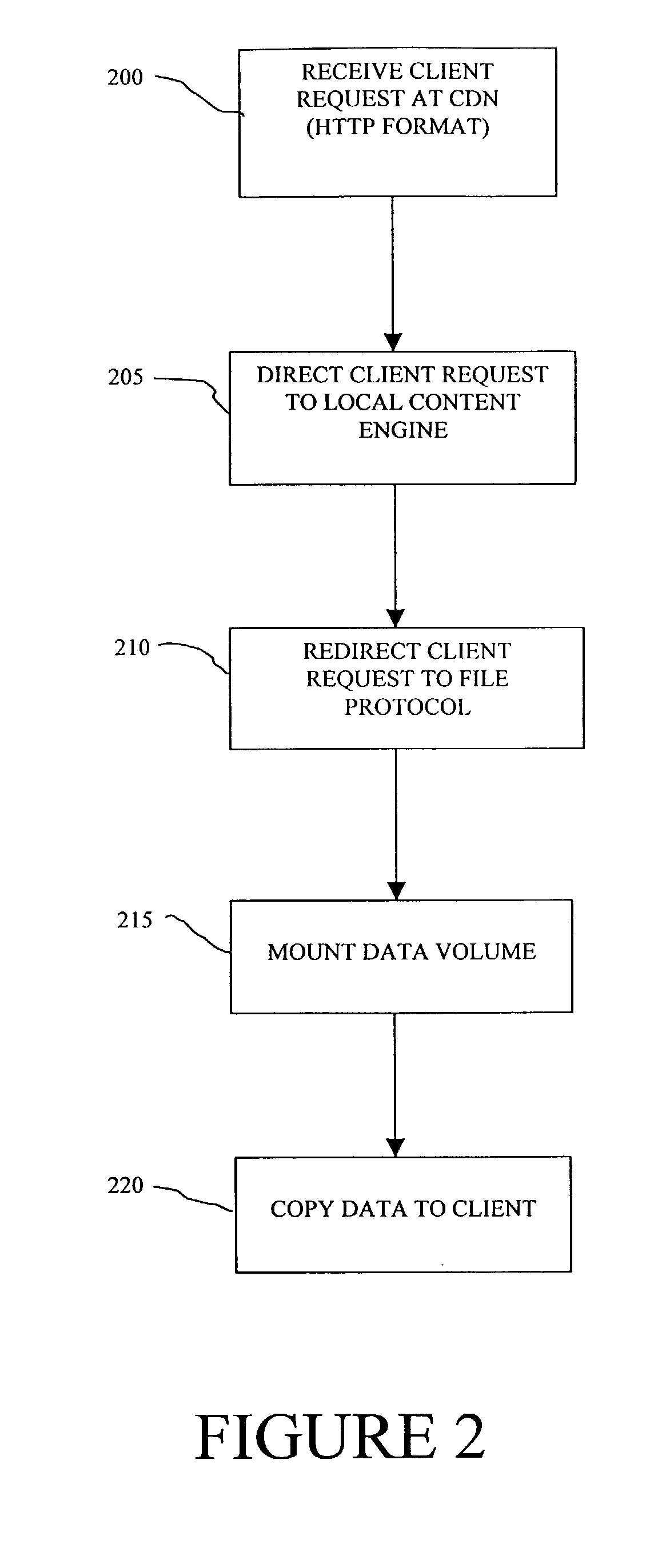Content request redirection from a web protocol to a file protocol
a content request and file protocol technology, applied in the field of content delivery, can solve the problems of cdn using the http protocol the majority of the time having a limited ability to respond to changes in load in the network, and the current content distribution technology in the network suffers from a number of deficiencies
- Summary
- Abstract
- Description
- Claims
- Application Information
AI Technical Summary
Benefits of technology
Problems solved by technology
Method used
Image
Examples
Embodiment Construction
[0039]According to principles of the present invention, Web server URLs in a content delivery network are converted by content engines to fileserver URLs. The redirection from HTTP, for example, to FTP or some other fileserver protocol outsources the load on the content engines while taking advantage of well-established methods of data handling and security. In addition, the network can dynamically be provisioned to handle a data load. In the present invention, WCCP and HTTP redirection methods are used separately or in combination to provide a distributed file system in which client's requests benefit from content routing prior to interacting (via a file protocol) with a file server.
[0040]Specifically, a client request in HTTP format is intercepted in the content delivery network and redirected to a content engine. The content engine responds to the intercepted HTTP request with a protocol redirection redirecting client data access through a file transfer protocol instead of HTTP p...
PUM
 Login to View More
Login to View More Abstract
Description
Claims
Application Information
 Login to View More
Login to View More - R&D
- Intellectual Property
- Life Sciences
- Materials
- Tech Scout
- Unparalleled Data Quality
- Higher Quality Content
- 60% Fewer Hallucinations
Browse by: Latest US Patents, China's latest patents, Technical Efficacy Thesaurus, Application Domain, Technology Topic, Popular Technical Reports.
© 2025 PatSnap. All rights reserved.Legal|Privacy policy|Modern Slavery Act Transparency Statement|Sitemap|About US| Contact US: help@patsnap.com



